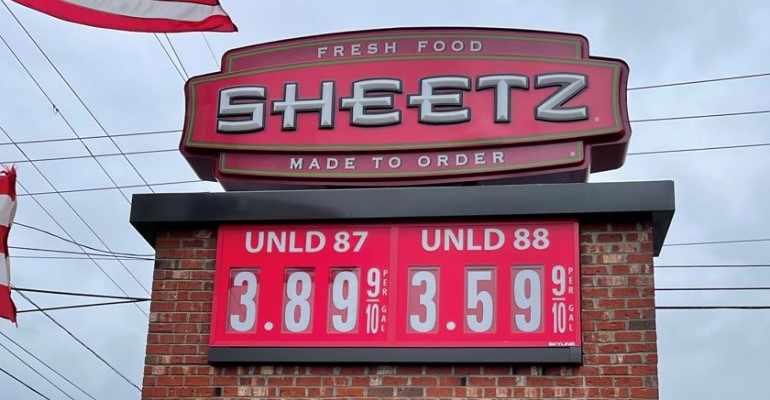
Despite action by the Biden administration offering an emergency waiver to allow the continued sale of E15 during the summer months for 2022, governors from eight Midwest states notified the U.S. Environmental Protection Agency Thursday that they are taking separate action to request the year-round sale of lower-carbon, lower-cost E15 in their states.
The bipartisan group of governors from Iowa, Illinois, Kansas, Minnesota, Nebraska, North Dakota, South Dakota and Wisconsin is exercising the authority granted to them under the Clean Air Act, and the action will result in equality in the regulation of E15 and E10 volatility during the summer months. This would allow retailers and marketers in these eight states to sell E15 unincumbered in 2023 and beyond.
These states represent over 10% of all fuel sales, over half of the nation’s E15 fueling stations, over 70% of the nation’s ethanol plants, and nearly 70% of the corn grown in the United States.
E15 is commonly priced 10 to 30 cents less per gallon than E10. Under the Clean Air Act, governors have the authority to ask EPA to equalize the summer regulations for E10 and E15. Currently, E10 and E15 are regulated differently, allowing oil refiners to “game the system by not supplying the proper gasoline to blend for summer E15,” explains the Iowa Renewable Fuels Association.
In the letter, the governors state the emissions benefits of lowering gasoline vapor pressure by 1-psi were modeled for each of their states. “The analysis concluded that a 1-psi RVP reduction would be beneficial to air quality, as emissions of carbon monoxide, oxides of nitrogen and volatile organic compounds would be reduced.”
Renewable Fuels Association President and CEO Geoff Cooper states, “Once this notification is approved by EPA, it will mean lower pump prices for drivers in these eight states, lower tailpipe pollution, a more secure energy supply, and a more vibrant rural economy. These states have guided the way forward on E15, and we call on other states and the EPA to follow their lead so that the benefits of E15 can be permanently enjoyed by drivers across the nation.”
Related: What’s next for E15 after President Biden’s announcement?
“Our nation cannot let outdated regulations stand in the way of a clean energy future and we look forward to EPA’s affirmative response on this issue,” says Growth Energy CEO Emily Skor.
In official action on April 29, EPA official issued the emergency fuel waiver to allow E15 gasoline. “President Biden and this administration are committed to protecting American consumers from the impacts of Russia’s unprovoked attack against Ukraine,” says EPA Administrator Michael S. Regan. “Putin’s war has had a profound impact on global and domestic energy markets. In consultation with Secretary Granholm, I have concluded that it is necessary to take action to allow E15 sales during the summer driving season in order to minimize and prevent disruption of summertime fuel supply to consumers.”
Earlier in the week, EPA ag adviser Rod Snyder says the agency believes the exhaust profile between E10 and E15 are substantially similar. “We’re not concerned about any potential environmental impacts on this decision, but we’re happy to work with states if there are concerns,” Snyder says.
Cooper also highlighted recent research from refining sector experts that showed the action sought by the governors would impact gasoline production costs by just 1.5 cents per gallon or less in the Midwest.
IRFA Executive Director Monte Shaw states the importance of the action cannot be overstated to the future growth of ethanol use in the United States. “With no clear nationwide fix in sight, these governors decided it was time to take action on a state level and protect access to a fuel that saves family pocketbooks, reduces smog-forming emissions, boosts farmer income and lowers greenhouse gas emissions. This is a permanent fix for E15 and all higher ethanol blends,” Shaw adds.
Iowa Corn Growers Association President Lance Lillibridge explains, “Ethanol is a top market for Iowa’s corn farmers and by removing barriers to sell E15/Unleaded 88 year-round, drivers will have access to a higher octane, lower carbon fuel that is also more affordable. This announcement complements the relief that President Biden announced earlier this month for a summer 2022 E15 fix and extends that certainty for retailers and access to E15 for drivers.”
RFA released a new analysis which found that sales of E15 blended gasoline hit a record 814 million gallons in 2021. The 2021 volume represented a 62% increase over the prior year and was nearly double pre-pandemic sales volumes in 2019.
Growth Energy reports that E15 is available at more than 2,600 gas stations across 31 states.
Snyder also says there are also continued discussions between EPA and those on Capitol Hill regarding legislative solutions that allow for year-round E15 use after the court overturned action during the Trump administration that temporarily allowed E15 the past two summers.
The bipartisan Home Front Energy Independence Act puts into law a ban on Russian oil and opens up the use and production of biofuel. Specifically, the legislation combines parts of several of the past bills that would make E15 available year-round, among other things. The current excess ethanol capacity domestically is nearly the same as the amount of Russian gas the U.S. had been importing: roughly 83 million barrels versus 87 million barrels.
About the Author(s)
You May Also Like






